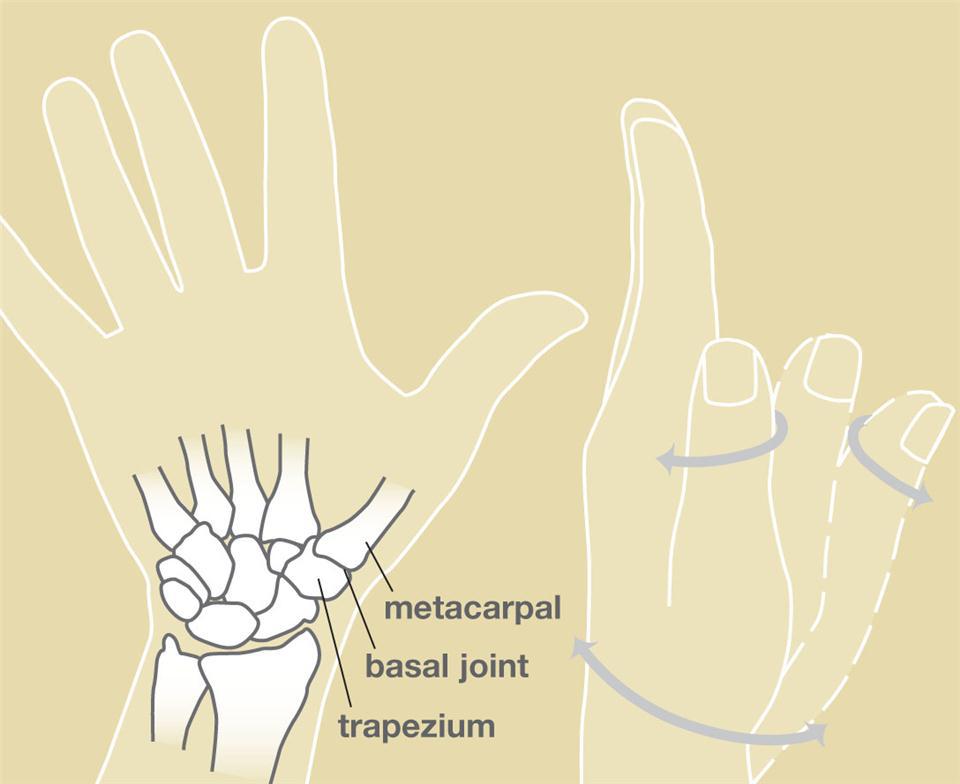Thumb arthritis at the base of the thumb is the second most common location in the hand to get arthritis (after the DIP joint of the fingertip). It is also known as basal joint arthritis or CMC arthritis of the thumb.
The greatest asset of your thumb is its ability to move in so many directions and provide strength as you grip objects. Unfortunately, the shape of this joint that allows such wide motion also predisposes this joint to wearing out. Over time, the cartilage of this joint can wear too thin and cause pain. It can progress to “bone on bone” arthritis over time.
Arthritis at the base of the thumb is most commonly seen in women over the age of 40. Genetics, previous injuries, and joint laxity can predispose the thumb to this type of arthritis.

Symptoms of Basal Thumb Arthritis
Symptoms include:
- Pain at the base of the thumb
- Weakness
- A prominent bump at the base of the thumb
- Difficulty opening doors, jars, and writing
While x-rays confirm the diagnosis, the severity on x-ray does not always correlate with symptoms.
Treatment for Basal Thumb Arthritis
Non-surgical treatment options are evaluated first. These include bracing, anti-inflammatory medications, and/or steroid injections.
If surgery is required, there are several techniques that can be utilized depending on a variety of factors. The common goal is to minimize the bone-on-bone arthritis rubbing against each side and causing pain. The most common surgery involves removing a small bone (the trapezium), which basically removes the painful joint, while maintaining the function of the thumb.
Diagrams modified from ASSH (www.assh.org)
